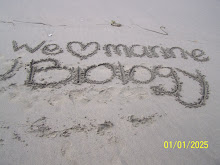
sewage and trash: sewage and trash are dumped into the sea, which often is responsible for toxic plankton blooms, another bad effect from sewage is detoxification which kills marine life because there is not enough oxygen in the water to breathe due to chemicals such as heavy metals and carcinogens.
storm drain- River run off: the careless littering done by communities has had a huge impact on the marine life and ecosystems. Many things that we wouldn’t think about have contributed to the destruction of the marine life habitats, such as soap from washing cars, cigarette butts, water from fertilized lawns, and much more. We as humans need to understand that we are sharing the planet with other living things not just ourselves all of our waste and careless decisions to litter and etc..have effected the ocean drastically. All of the following fertilizers, soap, and human wastes increase plankton and bacteria levels in the ocean in the same way sewage does.. Debris such as trash are very harmful to sea turtles and many fish because often times they either eat the trash and choke or they get tangled up in the debris and most of the time die.
oil spills: oil and gasoline are very toxic to the marine life. Many marine animals are effected yearly by oil spills. Bird’s are mostly affected when oil gets on their feathers or body they then try to clean themselves which brings poison in the bird’s body. Often times with marine life the oil makes it’s way to the lungs or liver which also poisons the animal. Oil spills also can make an animal go blind which causes death because of them not being able to see their predator to know when they need to attack and they usually can’t get food either. Oil spills are one of the main causes of animal extinctions.
Coral Reefs:The different Coral Reefs are under a extreme threat due to Climate Change, Ocean Acidificaton, dynamite fishing which is the practice of using explosives to stun or kill schools of fish for easy collection. To do this, is illegal and it is extremely destructive to the surrounding ecosystem which are the coral reefs that the fish live off of. Coral reefs are also affected by overuse of reef resources, and harmful land-use practices.
storm drain- River run off: the careless littering done by communities has had a huge impact on the marine life and ecosystems. Many things that we wouldn’t think about have contributed to the destruction of the marine life habitats, such as soap from washing cars, cigarette butts, water from fertilized lawns, and much more. We as humans need to understand that we are sharing the planet with other living things not just ourselves all of our waste and careless decisions to litter and etc..have effected the ocean drastically. All of the following fertilizers, soap, and human wastes increase plankton and bacteria levels in the ocean in the same way sewage does.. Debris such as trash are very harmful to sea turtles and many fish because often times they either eat the trash and choke or they get tangled up in the debris and most of the time die.
oil spills: oil and gasoline are very toxic to the marine life. Many marine animals are effected yearly by oil spills. Bird’s are mostly affected when oil gets on their feathers or body they then try to clean themselves which brings poison in the bird’s body. Often times with marine life the oil makes it’s way to the lungs or liver which also poisons the animal. Oil spills also can make an animal go blind which causes death because of them not being able to see their predator to know when they need to attack and they usually can’t get food either. Oil spills are one of the main causes of animal extinctions.
Coral Reefs:The different Coral Reefs are under a extreme threat due to Climate Change, Ocean Acidificaton, dynamite fishing which is the practice of using explosives to stun or kill schools of fish for easy collection. To do this, is illegal and it is extremely destructive to the surrounding ecosystem which are the coral reefs that the fish live off of. Coral reefs are also affected by overuse of reef resources, and harmful land-use practices.


































